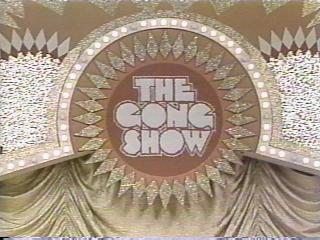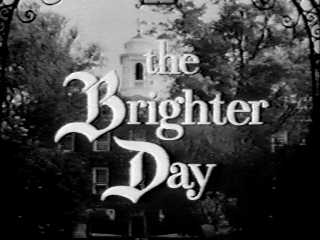Related Research Articles

The Gong Show is an American amateur talent contest franchised by Sony Pictures Television to many countries. It was broadcast on NBC's daytime schedule from June 14, 1976, through July 21, 1978, and in first-run syndication from 1976 to 1980 and 1988 to 1989, and was revived in 2017 for broadcast on ABC. The show was created and originally produced by Chuck Barris, who also served as host for the NBC run and from 1977 to 1980 in syndication. Its most recent version was executive-produced by Will Arnett and hosted by Tommy Maitland, a fictional character performed by Mike Myers. The Gong Show is known for its absurdist humor and style, with the actual competition secondary to the often outlandish acts presented; a small cash prize has typically been awarded to each show's winner.

The Tonight Show is an American late-night talk show that has been broadcast on the NBC Television Network since 1954. The program has been hosted by six comedians: Steve Allen (1954–1957), Jack Paar (1957–1962), Johnny Carson (1962–1992), Jay Leno, Conan O'Brien (2009–2010), and Jimmy Fallon (2014–present). Besides the main hosts, a number of regular "guest hosts" have been used, notably Ernie Kovacs, who hosted two nights per week during 1956–1957, and a number of guests used by Carson, who curtailed his own hosting duties back to three nights per week by the 1980s. Among Carson's regular guest hosts were Joey Bishop, McLean Stevenson, David Letterman, David Brenner, Joan Rivers, and Jay Leno, although the practice has been mostly abandoned since hosts currently prefer reruns to showcasing potential rivals. Fallon has used guest hosts rarely, co-hosting the May 24, 2021, broadcast with Dave Grohl, Jimmy Kimmel hosting the April 1, 2022, broadcast, Shawn Mendes co-hosting the April 29, 2022, broadcast, Megan Thee Stallion co-hosting the August 11, 2022, broadcast, Demi Lovato co-hosting the August 17, 2022, broadcast, and Jack Harlow co-hosting the October 6, 2022, broadcast.

Amos 'n' Andy was an American radio sitcom about black characters, initially set in Chicago then later in the Harlem section of New York City. While the show had a brief life on 1950s television with black actors, the 1928 to 1960 radio show was created, written and voiced by two white actors, Freeman Gosden and Charles Correll, who played Amos Jones (Gosden) and Andrew Hogg Brown (Correll), as well as incidental characters. On television, 1951–1953, black actors took over the majority of the roles; white characters were infrequent.

Today is an American morning television show that airs weekdays from 7:00 a.m. to 11:00 a.m. on NBC. The program debuted on January 14, 1952. It was the first of its genre on American television and in the world, and after 72 years of broadcasting it is fifth on the list of longest-running United States television series.
The Nashville Network, usually referred to as TNN, was an American country music-oriented cable television network. Programming included music videos, taped concerts, movies, game shows, syndicated programs, and numerous talk shows. On September 25, 2000, after an attempt to attract younger viewers failed, TNN's country music format was changed and the network was renamed The National Network, eventually becoming Spike TV in 2003 and Paramount Network in 2018.
The Gillette Cavalcade of Sports is an American radio-turned-television program by the National Broadcasting Company (NBC) that ran from 1942 to 1960. The program included broadcasts of a variety of sports, although it is primarily remembered for its focus on boxing matches.
Simulcast is the broadcasting of programs or events across more than one resolution, bitrate or medium, or more than one service on the same medium, at exactly the same time. For example, Absolute Radio is simulcast on both AM and on satellite radio. Likewise, the BBC's Prom concerts were formerly simulcast on both BBC Radio 3 and BBC Television. Another application is the transmission of the original-language soundtrack of movies or TV series over local or Internet radio, with the television broadcast having been dubbed into a local language.

Arthur Godfrey's Talent Scouts was an American radio and television variety show which ran on CBS from 1946 until 1958. Sponsored by Lipton Tea, it starred Arthur Godfrey, who was also hosting Arthur Godfrey and His Friends at the same time.

The Brighter Day is an American daytime soap opera which aired on CBS from January 4, 1954, to September 28, 1962. Originally created for NBC Radio by Irna Phillips in 1948, the radio and television versions ran simultaneously from 1954–1956. Set in New Hope, Wisconsin, the series revolved around Reverend Richard Dennis and his four children, Althea, Patsy, Babby and Grayling.

National Barn Dance, broadcast by WLS-AM in Chicago, Illinois starting in 1924, was one of the first American country music radio programs and a direct precursor of the Grand Ole Opry.

The NFL on NBC is the branding used for broadcasts of National Football League (NFL) games that are produced by NBC Sports, and televised on the NBC television network and the Peacock streaming service in the United States.
This Week in Baseball is an American television series that focuses on Major League Baseball highlights. Broadcast weekly during baseball season the program featured highlights of recent games, interviews with players, and other regular features. The popularity of the program, best known for its original host, New York Yankees play-by-play commentator Mel Allen, also helped influence the creation of other sports highlight programs, including ESPN's SportsCenter.

Eleanor Steber was an American operatic soprano. Steber is noted as one of the first major opera stars to have achieved the highest success with training and a career based in the United States.
The Standard School Broadcast is a weekly educational radio program that went on the air in 1928 and promoted music appreciation for students in the western United States. It was the oldest educational radio program in America. Based in San Francisco, California, the series was carried on NBC radio stations and via syndication. The Standard School Broadcast was devoted to music and American history. Carmen Dragon was music director of the programs for many years. The program's sponsor, Standard Oil of California, was honored with a Peabody Award for the series in 1958. In 1975, the program received the Peabody Institutional Award "for 47 years of continuous educational radio service".

Idabelle Smith Firestone was an American composer and songwriter.
"If I Could Tell You" is a popular American song composed in 1940 by Idabelle Firestone to words by Madeleine Marshall.
Gene Hamilton was an announcer in the era of old-time radio. He had a 46-year career with NBC. An article in a contemporary magazine, Radio Guide, said Hamilton "has a splendid bass voice and one of the best of the group."
In 1960, ABC returned to baseball broadcasting with a series of late-afternoon Saturday games. Jack Buck and Carl Erskine were the lead announcing crew for this series, which lasted one season. ABC typically did three games a week. Two of the games were always from the Eastern or Central Time Zone. The late games were usually San Francisco Giants or Los Angeles Dodgers' home games. However, the Milwaukee Braves used to start many of their Saturday home games late in the afternoon. So if the Giants and Dodgers were both the road at the same time, ABC still would be able to show a late game.
NBC made history in the 1980s with an announcerless telecast, which was a one-shot experiment credited to Don Ohlmeyer, between the Jets and Dolphins in Miami on December 20, 1980), as well as a single-announcer telecast, coverage of the Canadian Football League during the 1982 players' strike, and even the first female play-by-play football announcer, Gayle Sierens.
References
- 1 2 3 4 5 Dunning, John (1998). On the Air: The Encyclopedia of Old-Time Radio . Oxford University Press, USA. p. 705. ISBN 978-0-1950-7678-3 . Retrieved 30 September 2017.
Voice of Firestone
- ↑ Cox, Jim. Music Radio: The Great Performers and Programs of the 1920s Through Early 1960s. McFarland. pp. 307–315. ISBN 978-0-7864-2047-6. Archived from the original on 2007-11-06. Retrieved February 28, 2022.
- ↑ Young, William H.; Young, Nancy K. (2005). Music of the Great Depression. Greenwood. p. 176. ISBN 978-0-3133-3230-2.
- ↑ Classic themes.com
- ↑ Fairfax, Arthur (February 8, 1941). "Mr. Fairfax Replies" (PDF). Movie-Radio Guide. 10 (18): 45. Archived from the original (PDF) on 20 January 2015. Retrieved 20 January 2015.
- ↑ "Voice of Firestone". New England Conservatory. Archived from the original on 30 September 2017. Retrieved 30 September 2017.